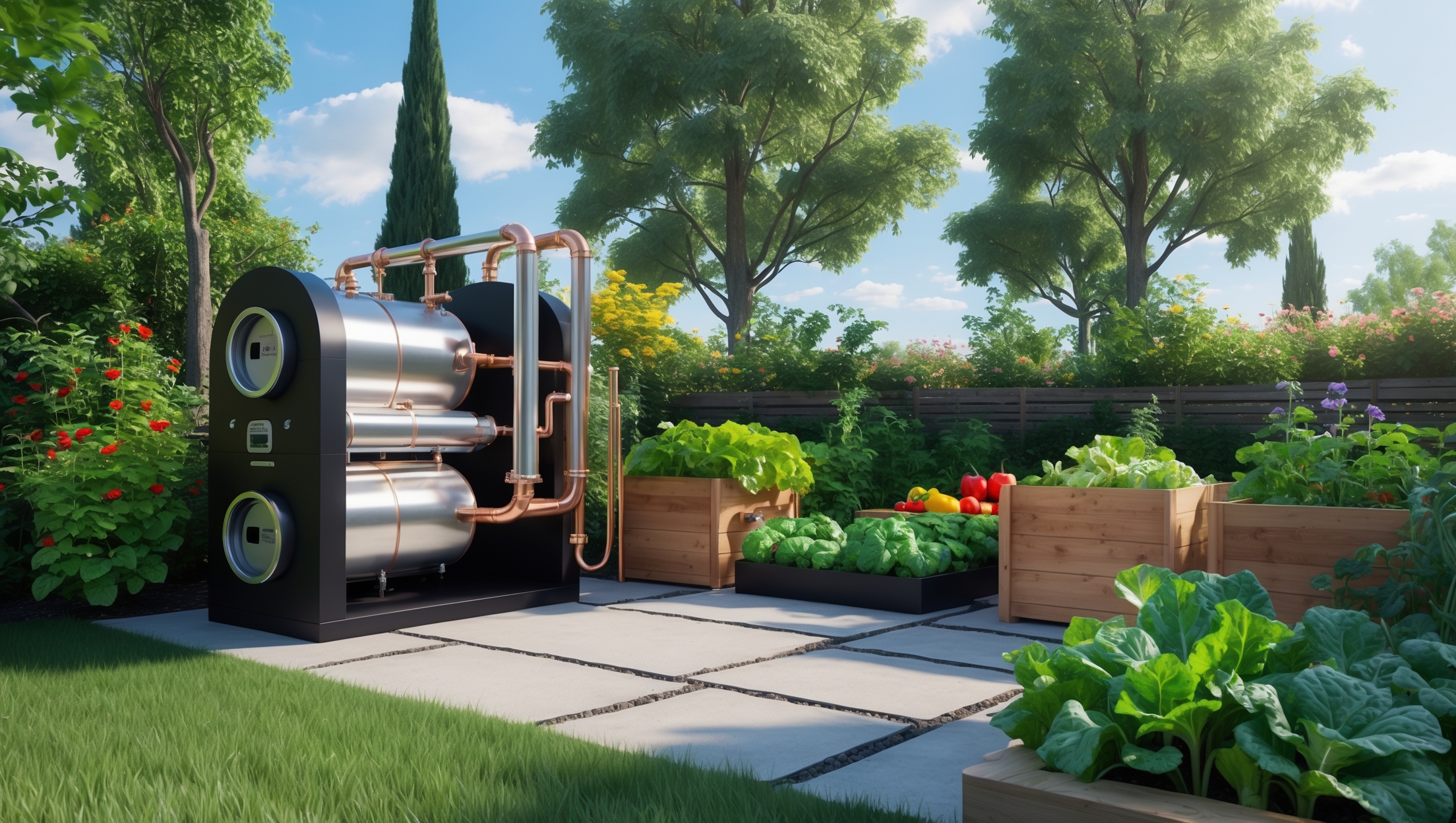Introduction: The Unique Regulatory Landscape of Community Wind Power Co-Ops
Community wind power co-ops represent a democratized, sustainable approach to generating local energy while empowering residents with both environmental and economic benefits. Unlike large-scale commercial wind farms or individual residential turbines, community wind projects are collectively owned and operated, often by local residents, farmers, or small businesses. While this model has proven successful in many regions, one of the most significant hurdles that aspiring co-ops face is navigating the complex maze of local compliance and permit requirements. Regulations can vary widely by municipality, county, and state, with each jurisdiction imposing its own rules regarding land use, environmental assessments, public participation, and more.
This article offers a detailed, step-by-step guide for community wind power co-ops to successfully manage compliance and permits. We’ll demystify the process, highlight potential pitfalls, and provide actionable tips to help your co-op move from concept to construction while adhering to best practices and legal requirements. Whether you’re just forming a co-op or preparing your permit application, understanding the regulatory landscape is crucial for a smooth project trajectory and long-term operational success.
Understanding the Regulatory Framework
What Makes Community Wind Power Co-Ops Unique?
Community wind co-ops differ from traditional wind projects in several ways:
- Ownership Structure: Projects are owned collectively by local stakeholders rather than a single corporate entity.
- Scale: Typically smaller installations (1–10 turbines), often designed to serve local energy needs.
- Funding: Financing often comes from member investments, grants, or local fundraising efforts.
- Stakeholder Engagement: Local buy-in and community support are essential for success and regulatory approval.
These factors influence how regulations apply and underscore the importance of targeted compliance strategies.
Key Regulatory Bodies and Jurisdictions
Depending on your location, your co-op will likely deal with multiple layers of government:
- Municipal/County: Zoning boards, planning commissions, and building departments.
- State: Departments of energy, environmental protection, and public utilities.
- Federal: Agencies like the U.S. Fish and Wildlife Service or Federal Aviation Administration (FAA) for certain projects.
Mapping out all relevant jurisdictions early can prevent costly delays or permit denials later.
Step-by-Step Guide: Navigating Local Permitting
1. Initial Site Assessment and Feasibility
Before launching into the permit process, conduct a thorough site assessment:
- Wind Resource Evaluation: Use anemometer data, wind maps, and third-party assessments to ensure adequate wind speeds.
- Land Ownership and Easements: Secure written agreements from all landowners involved.
- Proximity to Sensitive Areas: Identify wetlands, wildlife habitats, historical sites, and residential zones that may trigger additional reviews.
Document all findings as these will be referenced throughout the permit process.
2. Zoning and Land Use Permits
Most jurisdictions regulate wind turbines via zoning codes or special land use ordinances. Key considerations include:
- Permitted Use: Determine whether wind turbines are allowed by right, require a conditional use permit, or are prohibited.
- Setbacks and Height Restrictions: Minimum distances from property lines, roads, and inhabited structures must be respected.
- Noise and Shadow Flicker Limits: Some codes specify decibel limits and require modeling studies.
- Public Hearings: Many permits require notifying neighbors and holding public meetings to address concerns.
Submit detailed site plans and project descriptions with your application. Engage with planners early to clarify requirements and streamline review.
3. Environmental Compliance
Environmental review is a critical step, especially for projects near sensitive ecosystems or migratory paths. Required documentation may include:
- Environmental Impact Assessment (EIA): Analyze impacts on wildlife, soil, water, and air quality.
- Avian and Bat Studies: Many jurisdictions require at least a desktop study, and sometimes multi-season field surveys.
- Mitigation Plans: Propose measures to minimize and monitor environmental impacts.
Work with qualified consultants or local universities to ensure your assessments meet regulatory standards. Early engagement with environmental agencies can smooth the approval process.
4. Building, Electrical, and Safety Permits
Each wind turbine installation must comply with local building and electrical codes. Typical steps involve:
- Structural Engineering Review: Certify that foundations and towers meet wind load and seismic requirements.
- Electrical Permits: Ensure grid interconnection complies with national and local codes (e.g., NEC, IEEE).
- Inspection Schedule: Plan for on-site inspections at specified project milestones.
Submit manufacturer specifications, engineering drawings, and safety documentation with your applications. Factor in lead times for inspections and re-submissions if corrections are needed.
5. FAA and State Utility Filings (If Applicable)
If your turbines exceed certain heights (typically 200 feet) or are located near airports, FAA approval is mandatory. Additionally, some states require filings with public utility commissions or participation in renewable energy credit (REC) programs.
- FAA Determination: File a Notice of Proposed Construction online (Form 7460-1).
- State Utility Interconnection: Submit interconnection applications and comply with technical standards for grid tie-in.
Consult with state and federal agencies early to determine if your project triggers these requirements.
Preparing a Strong Permit Application
Detailed Documentation and Site Plans
Regulatory authorities expect comprehensive, clear documentation. Include:
- Project Narrative: Describe the co-op model, scale, and community benefits.
- Site Maps: Show turbine locations, setbacks, access roads, and transmission lines.
- Technical Specifications: Supply turbine make/model, noise curves, and safety features.
- Environmental Reports: Attach all required studies and mitigation proposals.
Present information logically and address potential concerns proactively.
Engaging the Community and Stakeholders
Community wind co-ops thrive on local support. Effective engagement can ease the permit process:
- Information Sessions: Host open houses or webinars to explain the project and gather input.
- Responsive Q&A: Prepare factual responses to common concerns (noise, aesthetics, property values).
- Documented Support: Collect letters of support from neighbors, local businesses, and civic leaders.
Demonstrating broad community backing is often a decisive factor for permit reviewers.
Anticipating and Addressing Common Hurdles
Some frequent challenges include:
- NIMBYism (Not In My Back Yard): Address visual, noise, and wildlife concerns with data and mitigation strategies.
- Incomplete Applications: Missing documents or signatures can trigger delays.
- Changing Regulations: Stay informed of new ordinances or moratoria that may affect your timeline.
Assign a compliance lead within your co-op to track progress and maintain consistent communication with permitting authorities.
Best Practices for Streamlining Approval
Early Agency Consultation
Schedule pre-application meetings with relevant agencies. Bring draft plans and seek feedback on potential red flags. Early input saves time on revisions and avoids costly surprises.
Professional Partnerships
Consider engaging:
- Permitting Consultants: Specialists can navigate local requirements and expedite submissions.
- Environmental Scientists: Ensure ecological studies meet regulatory standards.
- Legal Counsel: Address complex land use or ownership issues.
Investing in expertise up front often pays dividends in reduced delays and fewer application cycles.
Transparent Record-Keeping
Maintain a digital repository of all applications, correspondence, approvals, and inspection reports. This facilitates fast responses to information requests and supports ongoing compliance during operation.
Case Examples: Lessons Learned from Successful Co-Ops
Rural Midwest Co-Op: Navigating Wildlife Concerns
A community wind project in the Midwest encountered delays due to concerns about migratory birds. By conducting a voluntary avian survey and adopting a shut-down protocol during peak migration, the co-op gained regulatory approval and built goodwill with local conservation groups.
Suburban New England Co-Op: Overcoming Zoning Challenges
In a densely populated area, a co-op faced strict setback rules that limited turbine placement. By negotiating a variance and demonstrating minimal shadow flicker, they secured unanimous support from the planning board.
Lessons Learned
- Proactive Communication: Early dialogue with regulators and neighbors can preempt opposition.
- Flexible Design: Be prepared to adjust turbine layout or scale to address site-specific issues.
- Documentation Matters: Meticulous records helped both co-ops respond rapidly to regulatory queries.
Ongoing Compliance: Maintaining Good Standing Post-Approval
Operational Reporting and Monitoring
Most permits include ongoing reporting requirements, such as:
- Noise Monitoring: Annual or event-triggered measurements to verify compliance.
- Wildlife Surveys: Periodic checks for bird or bat mortality as required by environmental agencies.
- Maintenance Logs: Documenting inspections, repairs, and safety drills.
Establish clear protocols for data collection and reporting to avoid penalties or permit revocation.
Adapting to Regulatory Changes
Regulations evolve. Appoint a compliance officer or committee to:
- Monitor for updates in zoning, environmental, or grid interconnection rules.
- Engage with local and state renewable energy networks to stay informed.
- Proactively seek permit amendments if project modifications are needed.
Being responsive to change demonstrates good faith and strengthens community trust.
Conclusion: Building a Resilient, Compliant Community Wind Co-Op
Successfully developing a community wind power co-op requires more than technical know-how and funding—it demands a deep understanding of the local regulatory environment and a proactive approach to compliance. By systematically mapping out all relevant permits, engaging with regulatory authorities and the broader community, and assembling comprehensive documentation, your co-op can greatly increase its chances of timely and successful project approval. The experiences of established co-ops underscore the importance of flexibility, communication, and meticulous planning at every step of the process.
Remember, the permit process is not simply a bureaucratic hurdle—it’s an opportunity to build public trust, demonstrate environmental stewardship, and ensure the long-term sustainability of your project. By adopting best practices outlined in this guide, your community can transform regulatory compliance from an obstacle into a cornerstone of your co-op’s success. Stay organized, consult with local experts, and keep your community engaged. The payoff isn’t just a set of spinning turbines, but a resilient, empowered, and sustainable future for everyone involved.
As the green energy revolution accelerates, community wind power co-ops will play an increasingly vital role in democratizing clean energy. With the right approach to compliance and permitting, your co-op can lead the way—setting a standard for environmental responsibility, technical excellence, and genuine community benefit.





For a new community wind co-op looking to get started, which stage of the local permit process typically causes the most unexpected delays? Are there any strategies to anticipate or speed up those specific regulatory hurdles based on your experience?
In many cases, the public consultation and environmental impact assessment stages tend to cause the most unexpected delays for new community wind co-ops. These steps can reveal local concerns or requirements that extend timelines. To anticipate issues, it’s wise to engage with community members early, prepare thorough documentation, and consult local authorities before formally submitting applications. This proactive approach can help identify potential obstacles and address them before they become bigger problems.
I’m curious about the step-by-step process you mentioned for securing permits. Are there certain steps that usually take the longest or tend to trip up new community wind co-ops?
In the step-by-step permitting process for community wind co-ops, the public consultation and environmental impact assessment phases often take the longest. New co-ops sometimes underestimate how much time it takes to coordinate with local authorities and address concerns from nearby residents. Gathering thorough documentation and maintaining clear communication during these steps can help smooth the process and avoid delays.
You mentioned that regulations can vary a lot depending on the municipality or county. Is there a way to find out early on what specific local requirements we’ll face before we start our permitting application?
Yes, one of the best ways to find out local requirements early is to contact your city or county planning or zoning office directly. They can provide details on permits, zoning, and any special rules for wind projects. You can also attend local planning meetings or review the municipality’s website for relevant regulations and application guidelines.
You mention that funding often comes from member investments or grants. Are there any compliance or reporting requirements attached to these funding sources that could impact the permit application timeline or process?
Yes, both member investments and grants can introduce additional compliance and reporting steps. For example, grants often require documentation about how funds will be used and regular progress reports. Member investments, especially if pooled, can trigger securities regulations that require disclosures or filings. These requirements may need to be satisfied before permits are approved, so they can indeed impact your overall project timeline. It’s important to coordinate closely with legal and financial advisors to stay on schedule.
How long does it usually take to move from forming a community wind co-op to actually breaking ground, based on the permitting and compliance steps? Are there common issues that end up delaying construction that first-timers might not expect?
The timeline from forming a community wind co-op to breaking ground can vary widely, but it typically takes 12 to 24 months. Delays often happen due to lengthy environmental assessments, unexpected zoning challenges, or slower-than-expected public consultations. New groups are sometimes surprised by the time needed to secure land leases and to navigate grid connection agreements. Factoring in extra time for these steps can help manage expectations.